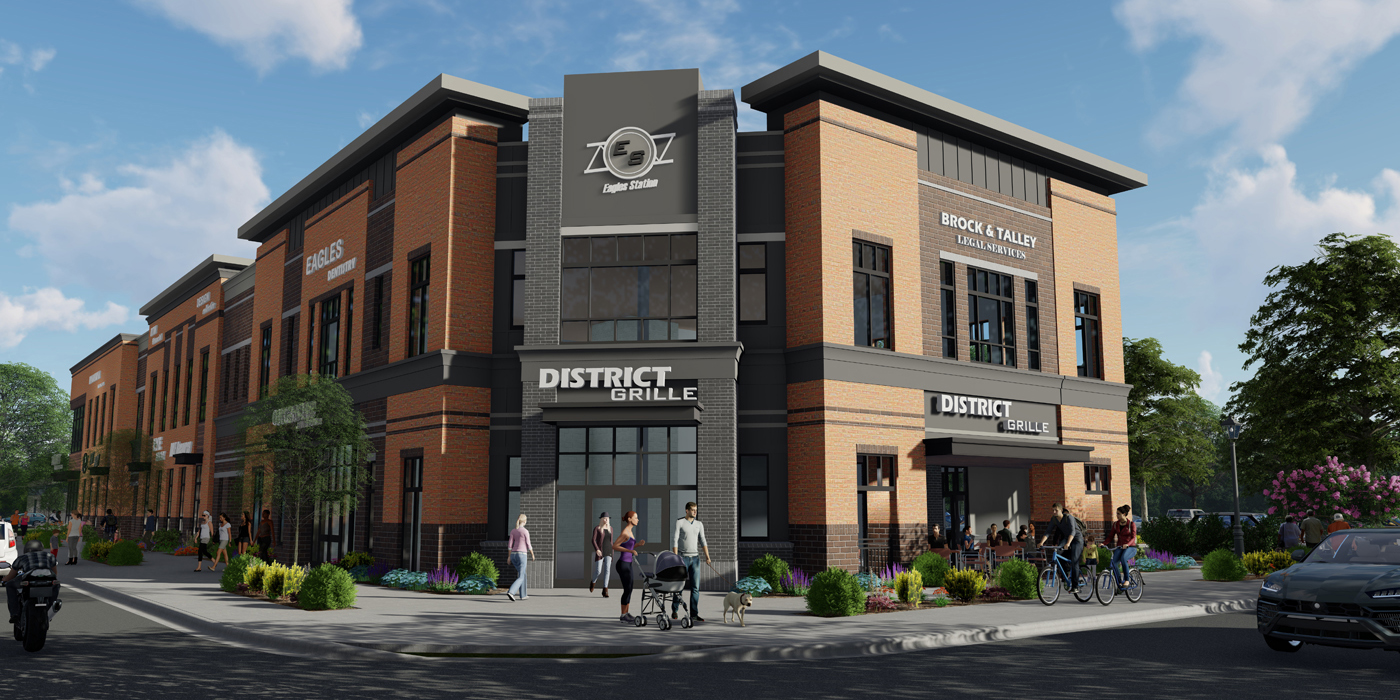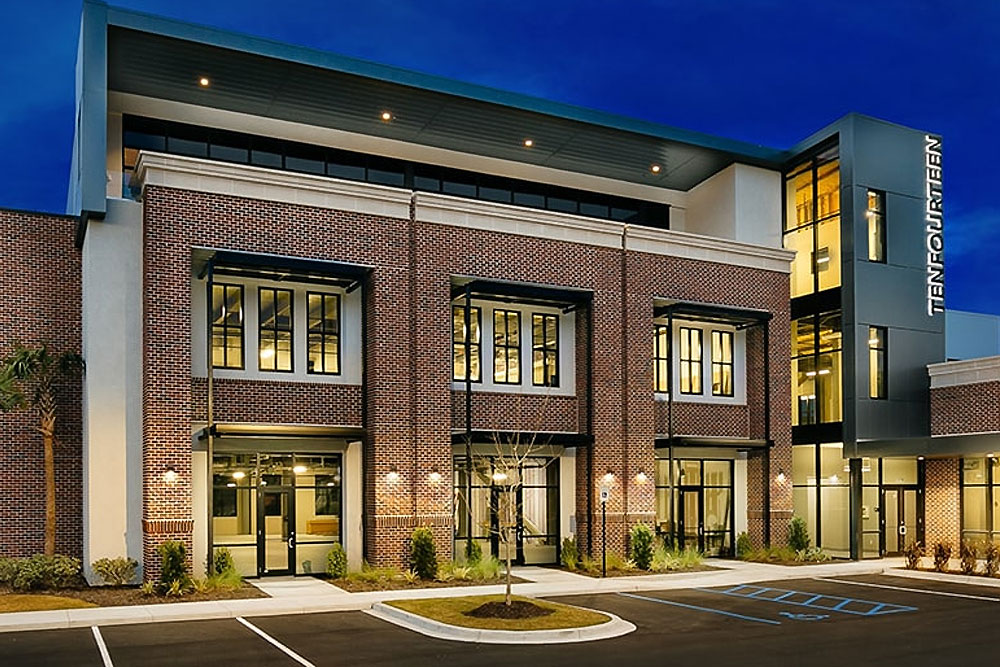commercial architects and Their Role in Workspace Layout
Wiki Article
How Commercial Architects Can Change Your Company Area With Expert Style Solutions
Commercial architects play a necessary function in improving service environments. Their know-how in design can considerably improve both functionality and aesthetics. By developing areas that show a brand name's identification, they boost functional effectiveness and staff member satisfaction. The effect of their job expands past mere appearance. Comprehending the nuances of collaboration and sustainability can cause transformative results. What specific aspects make these changes effective?Comprehending the Role of Commercial Architects
Commercial architects play a crucial duty fit organization environments that are both functional and cosmetically pleasing. They concentrate on developing rooms tailored to the specific requirements of organizations, guaranteeing that every square foot is made use of properly. These specialists incorporate components such as spatial design, lights, and products to boost performance and staff member well-being. By working together with customers, business architects gather insights right into functional demands and brand identification, translating these right into cutting-edge designs.Additionally, they browse complicated building codes and zoning laws, making certain compliance while optimizing design potential. Their proficiency prolongs to sustainability techniques, advertising energy efficiency and eco-friendly materials in their jobs. Through their creative vision and technological expertise, commercial architects not just create attractive rooms but also foster atmospheres that promote partnership and growth. Inevitably, their contributions greatly influence the total success and photo of a service.
Benefits of Specialist Style Providers

Tailoring Rooms to Your Brand Identification
Customizing areas to a brand name's identity is crucial for communicating its core values and objective. Commercial architects play a critical duty in boosting a business's aesthetic identity through thoughtful layout options. By aligning building aspects with brand name concepts, firms can produce atmospheres that resonate with customers and workers alike.Reflecting Brand Values
Just how can a properly designed area embody a firm's core worths? Commercial architects play a crucial role fit environments that reverberate with a brand name's identity. By integrating components such as color design, products, and formats, they produce spaces that mirror the essence of business. A technology business could choose for open layouts and contemporary furnishings to share innovation and partnership, while a high-end brand name may pick sophisticated finishes and intimate areas to evoke exclusivity and elegance. Thoughtful design not just enhances performance yet likewise cultivates a strong link between staff members, clients, and the brand. Ultimately, a well-crafted setting functions as a substantial representation of a company's goal and vision, strengthening its worths at every touchpoint.Enhancing Visual Identity
What aspects can successfully boost a brand name's aesthetic identification within a business room? Commercial architects play a crucial role in integrating layout functions that reverberate with a firm's ethos. Shade systems, typography, and products can be strategically selected to show brand name worths while guaranteeing visual allure. In addition, incorporating logo designs and brand name imagery into the design can produce a natural aesthetic story. Lights style can even more enhance the environment, guiding client assumptions and experiences (commercial architects). Format and furnishings choices should align with the brand's individuality, whether it's modern-day, typical, or ingenious. Ultimately, a properly designed industrial space not only brings in consumers yet additionally reinforces brand name acknowledgment, developing a long lasting impression that cultivates commitment and involvementEnhancing Performance and Performance
Enhancing performance and effectiveness in commercial spaces involves maximizing room application and making operations that enhance operations. Architects concentrate on developing formats that lessen squandered space while facilitating smooth adjustments in between jobs. This method not only improves efficiency yet likewise contributes to a much more cohesive functioning environment.Maximizing Area Utilization
Effective area utilization is a crucial factor in industrial style, where the style has to stabilize visual appeals with functionality (commercial architects). Architects utilize different methods to make the most of readily available square video while making sure that each location serves a distinctive purpose. By analyzing process, traffic patterns, and customer requirements, architects can create designs that boost both employee efficiency and customer experience. Multi-functional areas, flexible furniture arrangements, and maximized storage remedies are necessary parts in accomplishing this objective. Furthermore, including all-natural light and open spaces promotes an extra inviting environment, more raising the utility of the atmosphere. Eventually, efficient space use not just enhances functional performance but likewise adds favorably to the total brand picture, making it a necessary factor to consider in commercial designStreamlined Process Style
Just how can a properly designed operations change an industrial space into a hub of efficiency? Structured operations style concentrates on maximizing the physical format and functional processes within a service atmosphere. By tactically setting up workstations, meeting locations, and sources, architects can remove unneeded motion and improve collaboration. This thoughtful design minimizes interruptions and helps with communication, permitting staff members to concentrate on their tasks more efficiently. In addition, incorporating innovation into the workflow can better automate procedures, decreasing time invested on routine jobs. Therefore, services experience enhanced worker spirits and boosted outcome, creating a vibrant atmosphere that cultivates advancement. Ultimately, spending in streamlined operations style not just improves functionality yet also places an industrial room for sustainable development and success.Promoting Collaboration Via Style
Modern work spaces commonly prioritize private efficiency, the layout of industrial rooms progressively stresses partnership as a vital chauffeur of technology and team communication. Architects play a vital function in see this site developing environments that promote communication among workers. Open formats, multifunctional spaces, and tactically positioned communal locations urge spontaneous conversations and brainstorming sessions.Incorporating components such as movable furnishings and adaptable meeting areas permits teams to reconfigure spaces based on their collaborative needs. Furthermore, incorporating modern technology, like interactive whiteboards and video conferencing tools, enhances the capability to interact properly, regardless of location.Natural light and biophilic design elements also visit our website contribute to a much more welcoming environment, promoting convenience and well-being, which are essential for productive synergy. By focusing on these elements, commercial architects can develop vibrant environments that not only enhance collaboration but also drive general company success.Sustainable Design Practices in Commercial Architecture

Case Studies: Successful Improvements by Commercial Architects
The execution of lasting layout methods has not just improved the approach to commercial architecture however has likewise caused impressive transformations in various company spaces. One noteworthy situation is the redesign of a tech company's headquarters, where architects integrated all-natural light and environment-friendly wall surfaces, causing enhanced worker wellness and efficiency. This change lowered energy prices by 30% and enhanced the company's public image.In an additional circumstances, a retail shop went through a total overhaul, using reclaimed materials and energy-efficient systems. This not just brought in eco-conscious customers however also increased foot website traffic by 25%. A 3rd situation included a business office that welcomed an open-plan design with flexible workspaces, cultivating cooperation among teams. The architects' emphasis on developing a vibrant and adaptable environment considerably boosted staff member contentment. These situation studies exhibit exactly how commercial architects can develop impactful areas that align with organization goals and sustainability initiatives.Regularly Asked Concerns
How Much Do Commercial Style Solutions Usually Cost?
The expense of commercial style solutions differs widely, commonly varying from $100 to $250 per hour. Variables affecting pricing consist of task complexity, location, and the architect's experience, making it crucial for organizations to acquire detailed price quotes.What Sorts Of Services Profit Many From Commercial Architects?
Various services, including retail, hospitality, and company offices, substantially take advantage of industrial architects. These professionals improve capability, looks, and brand identity, making certain spaces are enhanced for consumer involvement and employee efficiency, inevitably fostering company growth.For how long Does an Industrial Style Task Generally Take?
The timeline for a commercial style job commonly ranges from several weeks to several months. Variables affecting period consist of project complexity, regulative authorizations, and collaboration among stakeholders, all of which can affect general completion time.Can I Work With an Industrial Designer for Renovations Just?
Yes, working with a business engineer for improvements is feasible. Many architects focus on improvement tasks, supplying proficiency in enhancing existing areas while adhering to policies and enhancing functionality, appearances, and total worth of business atmosphere.What Qualifications Should I Look for in a Business Engineer?

Report this wiki page